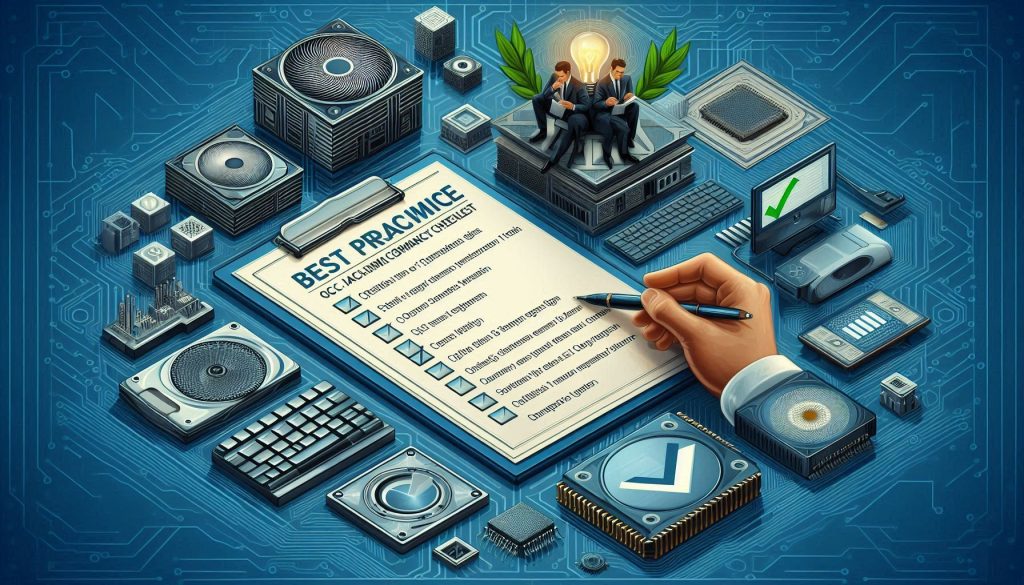
Best Practices and Ultimate SOC 2 Compliance Checklist
You find it difficult to arrange your SOC 2 compliance? Protection of consumer data and privacy depends on SOC 2 compliance. This book offers best practices and a thorough SOC 2 checklist to help you ace your audit.
Get ready to increase your security and win customer confidence.
Understanding SOC 2 Compliance
For service companies, a fundamental security framework is SOC 2 compliance. It guarantees businesses use robust policies and controls to safeguard consumer data.
Describe SOC 2.
Service Organization Control 2 goes as SOC 2. This compliance system guarantees businesses safeguard of client information. Designed by the American Institute of CPAs (AICPA), SOC 2 addresses five trust concepts: security, availability, processing integrity, confidentiality, and privacy.
These ideas help companies properly handle client data security-wise.
A SOC 2 audit looks at whether systems and procedures of a corporation satisfy these trust requirements. These audits are conducted by licenced CPA firms. They assess the security policies and risk-reducing strategies of the business.
The audit findings show to partners and clients that the company manages private information appropriately. In the data-driven corporate environment of today, this compliance helps create credibility and confidence.
Categories of SOC 2 Examinations
Two basic forms exist for SOC 2 audits: Type I and Type II. Type I audits evaluate, at a given moment, the control design of an organization. Their main concerns center on whether the controls fit the pertinent Trust Services Criteria.
Usually spanning six months to a year, type II audits assess not just the design but also the operational efficacy of controls over a period of time.
For service companies, SOC 2 Type II reports offer the best degree of assurance.
Every kind of audit has specific uses. Organizations just beginning their compliance path or those looking for a fast view of their security posture will find Type I helpful. Type II provides a more all-encompassing perspective displaying throughout time the performance of controls.
For developing confidence with customers and partners, Type II reports are therefore more beneficial.
Policies for Getting Ready for a SOC 2 Audit
Getting ready for a SOC 2 audit calls both meticulous attention to detail and thorough planning. These actions will guarantee you fulfill the required criteria and help you be ready for the process.
Estimate Goals and Scope
The basis of a SOC 2 audit is defining its goals and extent. Companies have to identify which services or systems would come under examination. This stage defines exactly the parameters of the audit procedure.
It allows one to concentrate on important issues affecting security, availability, processing integrity, confidentiality, and privacy.
A carefully stated scope directs the whole compliance process. It shapes control of risk, policy development, and policy execution. Companies should establish particular objectives for their SOC 2 audit.
These might be strengthening internal procedures, satisfying legal criteria, or increasing consumer confidence. Well stated goals guarantee that the audit provides real value and fits corporate demands.

Perform a Risk Evaluation.
Defining your scope and goals comes first; then, a risk assessment is really vital. This technique finds and assesses possible hazards to your data resources.
Your SOC 2 compliance activities revolve mostly on a comprehensive risk assessment.
Risk analyses provide efficient allocation of resources and help to rank security initiatives. They entail evaluating possible effects, looking at weaknesses, and figuring the probability of different security events.
For this process, cybersecurity professionals advise applying organized approaches as NIST or ISO 27001 frameworks.
A strong SOC 2 compliance program’s basis is a thorough risk assessment. Information security professional
Methodically assessing risks helps companies create focused plans to guard private information and keep client and stakeholder trust.
Create Official Policies and Procedures.
SOC 2 compliance depends on well established documented policies and processes. These records present the policies, guidelines, and procedures controlling the operations and security policies of a company.
For staff members, they provide a road map that guarantees everyone knows their obligations in preserving data privacy and information security. Well-defined, thoroughly supported policies enable businesses to satisfy the AICPA’s Trust Services Criteria (TSC).
Start by spotting holes in your present paperwork to design sensible policies. Emphasize topics include change management, data encryption, incident response, access control.
Get important players from legal, HR, and IT departments to guarantee thorough coverage. Once developed, these rules have to be accepted, shared, and easily available to every staff member.
Frequent reviews and changes help to maintain policies relevant and in line with changing security concerns and legal obligations.
Use strong access limits.
Achieving SOC 2 compliance depends critically on putting strict access restrictions into use. Organizations have to create strong user authentication systems to protect private data including multi-factor authentication.
Tight rules regarding password generation and maintenance help to stop unwanted access. Frequent assessments of user rights guarantee that staff members only have access to tools required for their positions.
Access control policies cover outside of internal systems. Maintaining security requirements depends on thorough screening and monitoring of third-party suppliers. Encryption of data in transit and at rest adds still another degree of security.
These procedures enable companies to satisfy SOC 2 criteria and coincide with the Trust Services Criteria. Using best practices in many facets of the company is the next absolutely vital step in SOC 2 compliance.
SOC 2 Compliance: Best Practices
Frequent evaluations, staff training, and regular process reviews define best practices for SOC 2 compliance. These actions enable businesses to remain current with their security protocols.
Would like further knowledge regarding maintaining the security of your company? See our complete SOC 2 compliance checklist by keeping on reading.
Review and update procedures regularly.
SOC 2 compliance depends on routinely assessing and modifying processes. Companies have to be on top of evolving industry standards and security issues. This includes evaluating present controls, spotting flaws, and making required corrections.
Regular security measure testing—including penetration tests and vulnerability scans—helps find flaws before they might be taken advantage of.
Maintaining compliance depends much on building a security culture inside the business. Security policy and best practice employee training should never stop. By simplifying the review and updating process, tools like Secureslate help to track changes and guarantee that every team member is using the most recent techniques.
We will next go over effective practices for putting robust access restrictions into effect.
Teach Staff Members Security Techniques
SOC 2 compliance depends on staff members receiving security protocol training. Businesses have to teach their employees the five Trust Service Criteria and their relevance for regular operations.
Frequent training courses maintain staff members current on the most recent security best practices. Important themes such data confidentiality, privacy, and processing integrity should be covered in these seminars.
Good security protocol training improves the general state of cybersecurity of a company. It lessens non-compliance risk and helps stop data breaches. Workers pick up safe handling of personally identifiable data as well as handling of possible security events.
This information enables employees to actively help to keep the SOC 2 compliance level of the business intact.
Perform Frequent Reviews
The foundation of SOC 2 compliance is often regular assessments. To find weak points in their security systems, companies have to do vulnerability tests and penetration testing.
These assessments show up areas needing work and control weaknesses. Regular checkings help businesses keep a strong security posture and stay ahead of possible hazards.
Regular assessments also help continuous efforts at compliance. An organization’s defenses change with the times as cyber hazards do. Frequent evaluations help to guarantee that security policies stay current and effective.
This proactive strategy fosters a security culture inside the business, so SOC 2 compliance is always evolving rather than a one-time occurrence.
Finally,
Compliance with SOC 2 needs both diligence and commitment. The foundation of effective compliance is a thorough checklist and following best standards. Regular audits, staff training, and data security must all come first for companies.
Adopting these values protects consumer data and enhances business reputation. Maintaining proactive approach in compliance guarantees client confidence and long-term success.